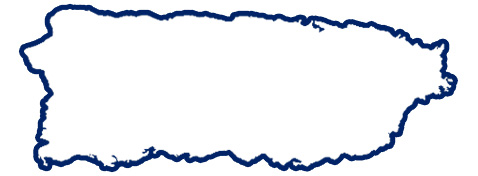- Personal
- AccountsHow can we help you?ToolsMy Online Bank 24/7
- Access your accounts
- Deposit and withdraw
- Pay your bills
- Transfer funds from your accounts
- Credit Cards & LoansHow can we help you?ToolsApply for a personal loan to consolidate your debt
- From $2,000 up to $75,000
- 12 to 84 months’ terms
Benefits for credit card customersLearn more - Insurance & InvestmentsNeed insurance?Plan for the futureQuote an Insurance
Contact one of our representatives.
Insurance ClaimsBegin your claim here, call 787.706.4111 (dial 1 for Customer Service) or visit our offices on workdays, Monday through Friday from 8:00 a.m. to 5:00 p.m.
- ServicesTargeted SegmentsMore ServicesMy Online Bank 24/7
- Access your accounts
- Deposit and withdraw
- Pay your bills
- Transfer funds from your accounts
Turns and Appointments in branchesLearn more
- Accounts
- Business
- Popular One
- About us

How can we help you?
Eighth decade
1963 – 1973
Puerto Rico
- The Apollo 11 mission brought the first person to set foot on the Moon, Neil Armstrong, on July 20, 1969.
- In the 1960s, sugar production declined considerably. By the mid-1970s, sugar production had become so scarce that practically all the island’s production was for local consumption. Most of the sugarcane was sold to the Mercedita refinery, which also belonged to the Autoridad de Tierras.
- The government continued its emigration strategy, with incentives to attract and retain investors in Puerto Rico.
- CORCO (Commonwealth Oil Refining Company), which was established in 1954, was at its maximum capacity. It was considered one of the biggest oil refineries and petrochemical producers in the world at the time.
- Luis Muñoz Marín announced his retirement and threw his support behind Roberto Sánchez Vilella, who won the 1964 election.
- Luis A. Ferré founded the New Progressive Party. He goes on to win the 1968 election. Some of his achievements during his administration were: he paid special attention to youth affairs and bringing young Puerto Rican into public service; amended the law to lower the voting age to 18 and established the Christmas bonus. He was a philanthropist and a patron of arts. The Ponce Museum of Fine Arts is one of his legacies.
- In 1970, El Nuevo Día was founded as an independent newspaper.
- In 1972, Rafael Hernández Colón won the governorship.
In 1968, Plaza Las Américas was inaugurated, the biggest mall in Latin America. In 1970, Marisol Malaret was selected as Miss Universe. On December 31st, 1972, the acclaimed baseball player Roberto Clemente died in an airplane crash. He was later selected to the Baseball Hall of Fame.

Banco Popular
- The Bank continued its ascent, until finally it became the principal banking institution in Puerto Rico. Its deposits broke records and its portfolio was as diversified and healthy as ever.
- By 1972, the Bank reached $945 million in deposits, which positioned it as one of the 100 largest banks in the United States.
- Popular was opening new branches and Popular Center was under construction.
- The centralization of the Bank’s accounts was key to modernizing its operations, along with the arrival of machines that sped up the bookkeeping and other operational processes throughout its branches. Because of these changes, Banco Popular’s future was bright.
- Popular Center was inaugurated on November 22, 1965. There were already a few small buildings in the zone. There was nowhere to grab a bite to eat, other than a tiny stall. There were no businesses initially, nothing at all.
- Little by little, other banking institutions, prestigious professional firms, and businesses began to build their own office buildings in the vicinity, until they formed what today is called La Milla de Oro (the Golden Mile) - the financial district of Puerto Rico.
- In 1972, La Cuenta Ideal was lauched. For the first time, a checking account, savings account, and a reserve were united in a single monthly statement. It was a resounding success.
The Bank launched other innovative services, such as the Popular Reserve Account, the Ideal Card, which was attached to the Ideal Account. The 1960s and the 1970s were the Bank’s two most construction-intensive decades. Popular continued financing housing projects, such as public housing and neighborhoods. The Banco Crédito y Ahorro Ponceño financed condominiums, which in the long run brought trouble and caused its bankruptcy.

Music
- Banco Popular presented its first music special as a tribute to the great composer Rafael Hernández.
- Many singers and composers kept reaping hits with bolero. New figures arose, such as Julio Ángel, Lucecita Benítez and Chucho Avellanet, and later they became idols in “La Nueva Ola”.
- Other New Wave standouts were Ednita Nazario, Aidita Viles, Charlie Robles, Lissette Álvarez, Papo Román, Pepe Luis, and countless others, with Alfred D. Herger as director and promoter.
- Lucecita Benítez won the OTI Festival with the song Génesis, by the Puerto Rican composer Guillermo Venegas Lloveras.
- José Feliciano won one of his nine Grammy.
- Salsa tooked flight and attained international popularity.
- Among the best of the Salsa genre were El Gran Combo, Willie Colón, Andy Montañez, Héctor Lavoy and Roberto Roena.
- The Mar y Tierra festival in Puerto Rico was held as a sequel to Woodstock.
- Several symphonic composers distinguished themselves, such as Jack Delano, Héctor Campos Parsi, Amaury Veray, Luis Antonio Ramírez and Rafael Aponte Ledée.
- The Coro de Niños de San Juan was founded.
- Dominican merengue was infiltrating the tastes of the Boricua community.

Christmas Tree
- Aluminum-based artificial trees become popular again. Millions were produced between 1958 and 1969 in New York, Pennsylvania and Wisconsin. These tastes reflected the era of space and “chic”.
- These trees were placed on a colored wheel that rotated at the base.
 Puerto Rico
Puerto Rico 


